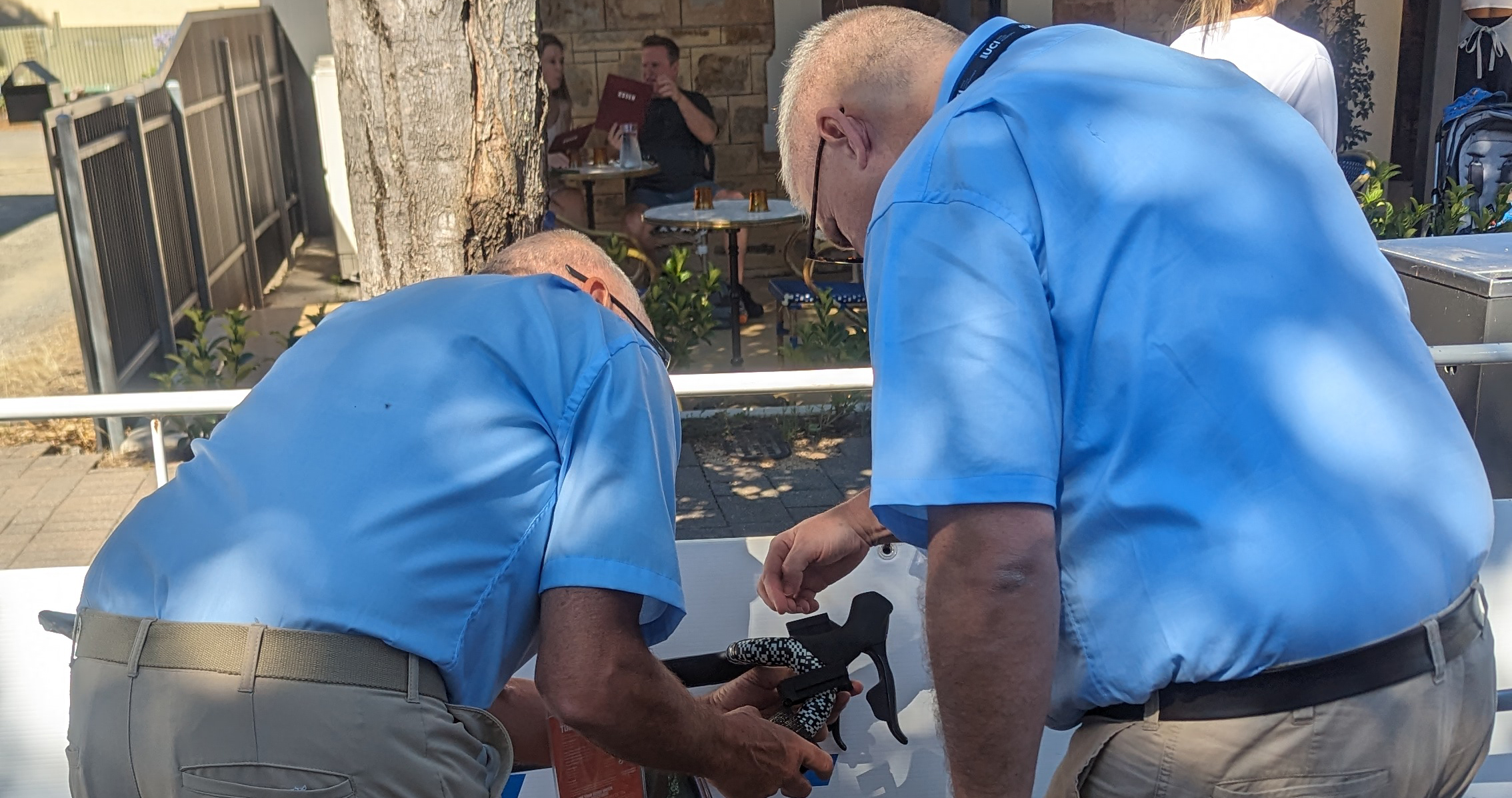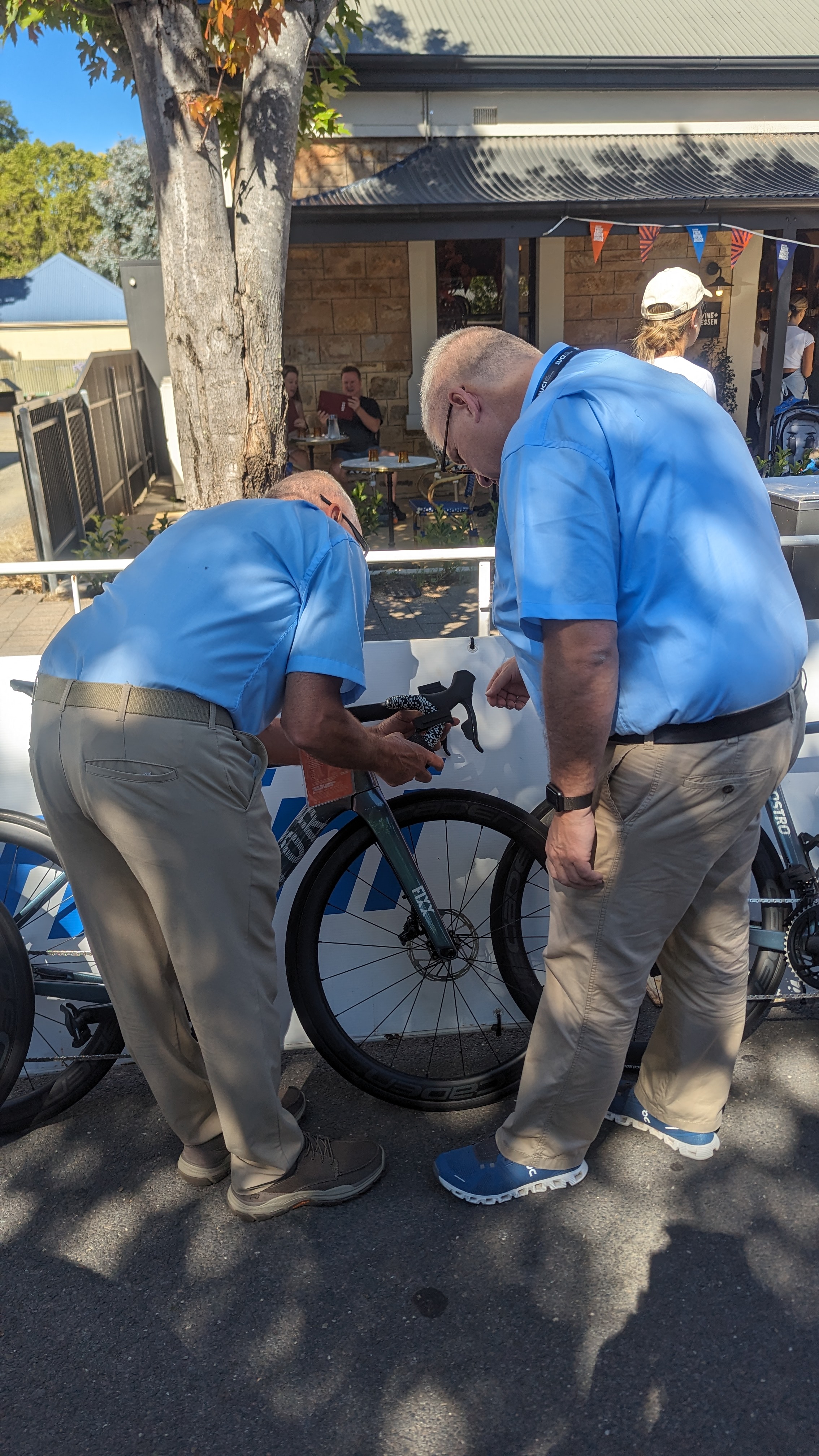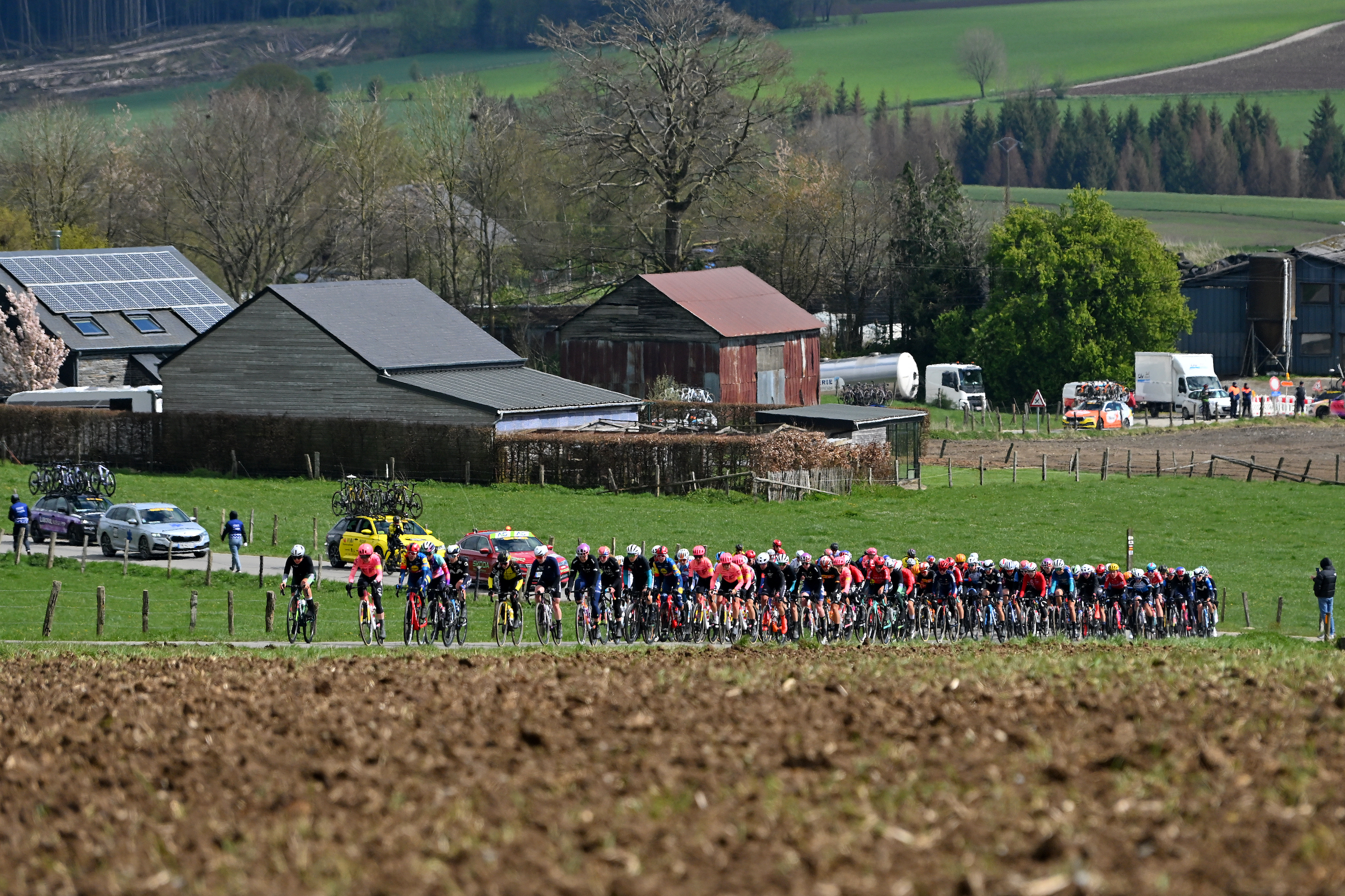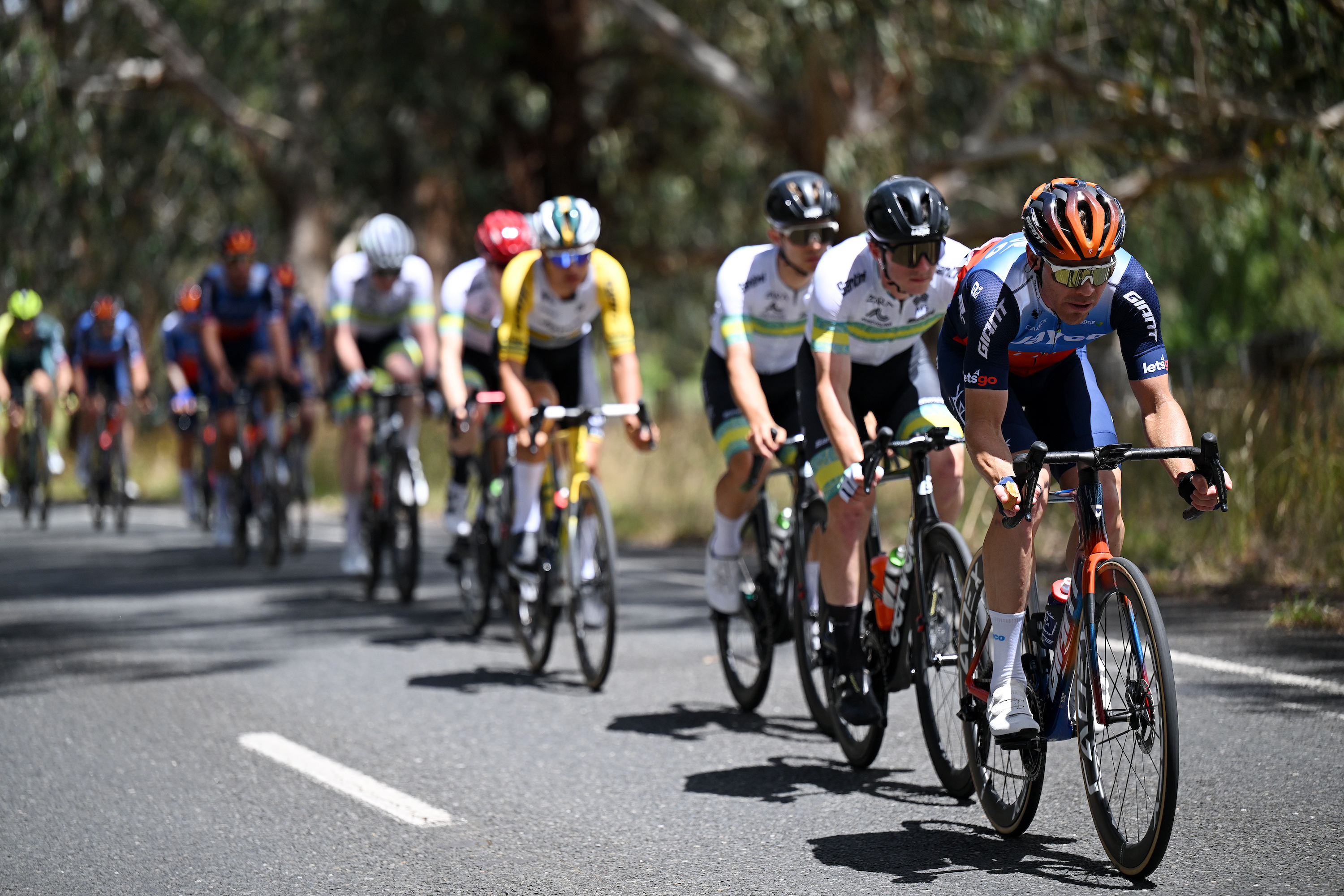UCI begins its brake lever position clamp down at Tour Down Under
The new rules came into force this year


The UCI has begun its clamp down on extreme brake lever positions, with commissaires checking bikes before stage one of the Women's Tour Down Under.
Cycling Weekly witnessed some of the first checks on brake lever angles, which appeared to be met with some bemusement from members of staff. The 3D printed tool used allows up to 10 degrees of inward rotation for the brake levers, and also checks how flared the drops of the handlebar are. According to Escape Collective, the UCI is in talks with bike manufacturers and the World Federation of the Sporting Goods Industry (WFSGI) to agree on the final angle range.
In recent years, many riders have tilted their hoods inwards, forcing them to narrow their body’s frontal area and creating a more aerodynamic position. However, when taken to the extreme the change can make it more difficult to grip the hoods.
In a statement shared last month, the UCI wrote: "Positioning the levers with an extreme inclination limits the braking capacity of the riders and constitutes a modification of the product beyond its intended use.
"Such positioning will be restricted in 2024. In 2025, new regulations will come into force requiring compliance with the installation guidelines established by brake lever manufacturers."
In December, Cycling Weekly was shown an unpublished document entitled ‘2024 regulation changes’, which appears to show a new tool the UCI will use to measure what it calls “brake lever inclination”. The tool wraps around the hood, enforcing a limit on the tilted angle of around four or five degrees.
The final decision on the allowed angle has yet to be made, but the 10 degrees used on Friday seems to allow for more flexibility than previously thought, although some will still be caught out. It is thought that teams will have access to the tool once the new rules are properly in place.
Get The Leadout Newsletter
The latest race content, interviews, features, reviews and expert buying guides, direct to your inbox!
Most bikes passed the test on Friday morning in Hahndorf, South Australia, but handlebars which did not comply were simply adjusted by mechanics, which seems simple enough.
Speaking to Cycling Weekly last year, UAE Team Emirates rider George Bennett said turned-in levers had already caused incidents in races.
“What sh*ts me is that when everybody slams on their brakes fully, they can’t use their brakes,” Bennett said. “I buy into [the aero argument], it works, it saves watts, but saving watts is only one thing. I like using my brakes.”
With commissaries now enforcing new rules, which could become stricter, it will be interesting to see what happens at the remainder of the women's race, and the men's Tour Down Under, which begins next Tuesday.

Commissaires checking brake lever hoods on Friday morning

Thank you for reading 20 articles this month* Join now for unlimited access
Enjoy your first month for just £1 / $1 / €1
*Read 5 free articles per month without a subscription

Join now for unlimited access
Try first month for just £1 / $1 / €1

Adam is Cycling Weekly’s news editor – his greatest love is road racing but as long as he is cycling, he's happy. Before joining CW in 2021 he spent two years writing for Procycling. He's usually out and about on the roads of Bristol and its surrounds.
Before cycling took over his professional life, he covered ecclesiastical matters at the world’s largest Anglican newspaper and politics at Business Insider. Don't ask how that is related to riding bikes.
-
 Colombian climbing star and former Vuelta a España winner Lucho Hererra could be investigated over murders of four people
Colombian climbing star and former Vuelta a España winner Lucho Hererra could be investigated over murders of four peopleA judge has called for an investigation into the former Vuelta winner who is alleged to have worked with paramilitary groups in Colombia
By Tom Thewlis
-
 I rode the full course of Liège-Bastogne-Liège and it opened my eyes to the beauty of this under-appreciated race
I rode the full course of Liège-Bastogne-Liège and it opened my eyes to the beauty of this under-appreciated raceFlanders and Roubaix have been and gone. Forget about them – some of the most epic racing of this Classics season is on the horizon
By James Shrubsall
